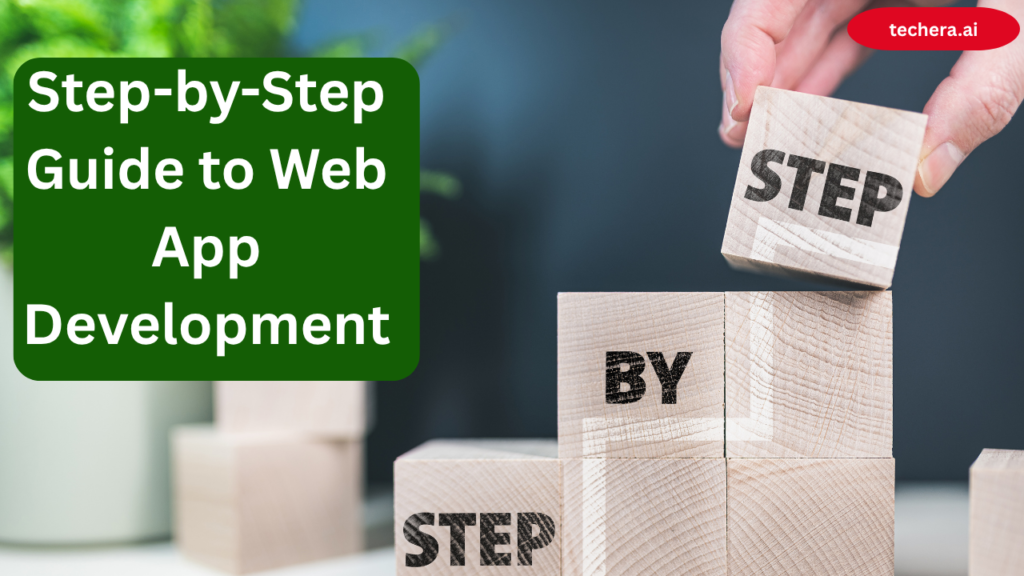
Are you wondering what is web app development and how it can help your business grow? This comprehensive step-by-step guide breaks down everything business owners need to know—from understanding the basics of web applications to planning, designing, and launching your own. Learn about the development process, essential tools, and best practices to ensure your web app meets your goals and delivers real value to your users. Perfect for beginners and decision-makers alike.
Introduction
What is Web App Development? The process of developing application software for a web browser is known as web app development. Unlike traditional desktop applications, web apps don’t need to be downloaded—they’re accessed through the internet, anytime, anywhere.
Why Business Owners Should Care
If you’re running a business in the 21st century, having a website isn’t enough. Consumers expect interactive, responsive, and dynamic platforms. That’s where web apps shine. Whether it’s customer portals, booking platforms, or custom dashboards, web apps offer enhanced functionality that turns casual users into loyal customers.
Understanding the Basics
Difference Between Websites and Web Apps
Think of a website as a digital brochure and a web app as an interactive tool. While websites display information, web apps allow users to do things—like shop, chat, book, or manage data.
Types of Web Applications
Static vs Dynamic Web Apps
- Static: Simple, fixed content. Good for portfolios or info-only sites.
- Dynamic: Content changes based on user interaction. Think Facebook or Gmail.
Single-Page Applications (SPA)
SPAs load one HTML page and dynamically update content without refreshing the page—making them super fast and smooth.
Progressive Web Apps (PWA)
The best features of mobile and web apps are combined in PWAs. They work offline, load fast, and feel like native apps.
Key Technologies Involved
Frontend vs Backend
- Frontend: What users see (HTML, CSS, JavaScript).
- Backend: Where the logic happens (Node.js, Python, PHP).
Popular Frameworks and Languages
- Frontend: React, Angular, Vue.js
- Backend: Django, Laravel, Express.js
- Database: MySQL, MongoDB, PostgreSQL
Step-by-Step Guide to Web App Development

Step 1: Define Your Goals and Objectives
Start by asking: What problem will this app solve? Is it for internal use or customer-facing? Be crystal clear on the “why.”
Also Read : What is Web App Development? The Role of User Experience (UX) in Web Apps
Step 2: Market and User Research
Research your audience, competitors, and market trends. Use surveys, interviews, and tools like Google Trends or SEMrush.
Step 3: Wireframing and UI/UX Design
Sketch the blueprint of your app. Use tools like Figma or Adobe XD to map out user journeys and create interactive prototypes.
Step 4: Choose the Right Tech Stack
Your tech stack should align with your goals and team expertise. Consider performance, scalability, and future maintenance.
Step 5: Development Phase
Frontend Development
Here, developers build the visual interface, ensuring it’s responsive and user-friendly.
Backend Development
This entails developing the essential features, such as logic, authentication, and APIs.
Database Integration
Storing and managing user data securely is crucial. Choose relational or NoSQL databases depending on your needs.
Step 6: Testing and Quality Assurance
Test across devices and browsers. Look for bugs, performance issues, and security flaws. Use both manual and automated testing.
Step 7: Deployment and Launch
Choose a reliable hosting provider like AWS, Azure, or Vercel. Set up domain, SSL, and monitor server performance.
Step 8: Post-Launch Maintenance & Updates
Your job isn’t over after launch. Update the app frequently to add features, address issues, and strengthen security.
Cost and Time Considerations
Factors Influencing Cost
- Complexity of features
- UI/UX design needs
- Developer experience and location
- Ongoing maintenance
Typical Range: $5,000 – $100,000+
How Long Does It Take?
- Simple App: 1-2 months
- Medium App: 3-6 months
- Complex App: 6+ months
Common Mistakes to Avoid
Skipping the Planning Phase
Lack of a solid foundation leads to scope creep and poor results.
Ignoring Mobile Responsiveness
More than half of users are on mobile. Make it mobile-friendly from day one.
Underestimating Testing
Bugs cost money and hurt your reputation. Test thoroughly—before and after launch.
Benefits of Web App Development for Businesses

Improved User Engagement
Interactive experiences lead to longer user sessions and higher conversion rates.
Automation and Scalability
Web apps can automate tasks like scheduling, payments, and analytics—saving time and money.
Brand Differentiation
A sleek, functional web app sets you apart from competitors still stuck with basic websites.
Choosing the Right Web App Development Partner
What to Look For
- Proven portfolio
- Clear communication
- Post-launch support
- Tech stack alignment
Red Flags to Avoid
- Vague proposals
- No testing strategy
- Lack of transparency
Conclusion
What is Web App Development? might sound intimidating, but with the right roadmap, tools, and partner, it becomes a powerful engine for business growth. Whether you want to streamline operations, serve customers better, or simply stand out in the market, web apps are your digital Swiss Army knife.
So, if you’re a business owner looking to build something more than “just a website,” now’s the perfect time to dive into the world of web app development.
Frequently Asked Question
Q. What’s the difference between a web app and a mobile app?
A. A web app runs in browsers, while a mobile app is installed on your phone. Web apps are more versatile, while mobile apps can access device-specific features.
Q. Can I build a web app without coding?
A. Yes! With platforms like Bubble, OutSystems, and Webflow, you can create basic online applications with drag-and-drop functionality.
Q. How secure are web applications?
A. Security depends on your implementation. Use HTTPS, proper authentication, input validation, and regular security audits.
Q. Do I need a custom web app or a template?
A. If you need unique features and full control, go custom. Templates are quicker and cheaper but come with limitations.
Q. How do I maintain my web app post-launch?
A. Keep your software updated, fix bugs promptly, monitor performance, and gather user feedback for future updates.

